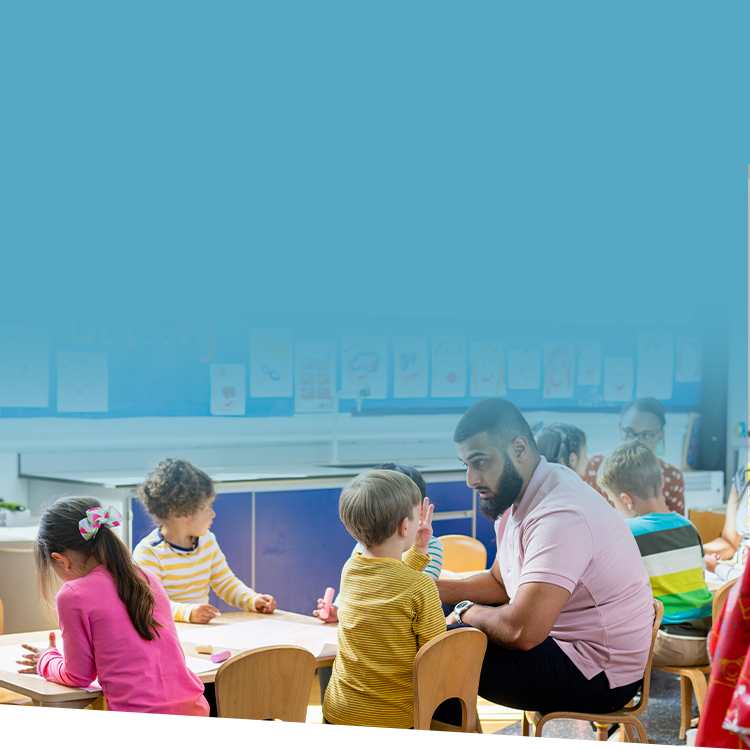Schools often work to promote academically challenging curriculum, but they must also address every student’s ability to engage effectively with that curriculum. In the classroom, teachers should implement accommodations that ensure all students have equal access to content along with the help they need to complete assignments. They also work closely with specialists, who help students develop the skills necessary to meet learning objectives.
Learning support is essential for student success. When accommodations are carefully chosen and thoughtfully implemented they maximize gains for each student from learning activities. They ensure equal access for students of varying abilities to experience your school environment, and enable them to overcome learning differences, build self-esteem, and improve academic success. Examples of learning supports include adjusted schedules, differentiated instructional strategies, supplementary materials, and modified assessments.
When examining and reflecting on the efficacy of your school's current learning support program, consider the five hallmarks to ensure success.
#1—Students get the support they need.
Accommodations typically enacted by a teacher to promote learning equity include:
- extended time;
- listening to audiobooks instead of reading text;
- working with fewer items per page or line;
- using manipulatives to help solve math problems; and
- having access to visual presentations of verbal material, such as word webs.
On the other hand, learning support can occur in the academic support center—also known as a learning center or resource room— implemented by learning specialists who reinforce skills that support classroom instruction. For example, the learning specialists might work with a student to:
- create an outline or rough draft for an assignment;
- review concepts and applications while solving math problems; or
- provide extra reading support for students who need to build fluency and comprehension skills.
Implement these supports in addition to accommodations.
Additionally, learning support should fit into the school day, ideally during comparable instruction time. For example, in the Lower School, specialists would provide reading instruction during a reading block and math support during a math block. Time designated for learning support should not be taken from particular subjects, recess, or lunch.
#2—You have the right staff.
As you begin planning your learning support program, you first consider your staff. Learning specialists must be experts, boasting advanced degrees in fields like Education and Psychology, and have received advanced training in their specialty areas. In addition, they must be skilled communicators, empathetic, flexible, trustworthy, and collaborative—able to establish healthy and authentic relationships with students and colleagues.
Learning specialists are part of the school community and take on roles as advisors, coaches, club leaders, and recess or lunch monitors when possible. This helps increase their visibility and builds trust with students.

Tune in to live webinars every week during the school year to get specific, research-backed insight you can immediately apply at your school.
#3—Your teachers are knowledgeable.
Teachers and learning specialists must work cooperatively to ensure students receive the support they need. Protocols help teachers understand their students' strengths and challenges, and appreciate the accommodations they require.
- Is there a process that clarifies how classroom teachers can communicate emerging learning concerns and to whom?
- Is there an understanding of what learning support plans look like, how they are shared, what information is shared, and how teachers will be held accountable for the recommendations contained in those plans?
- Do your classroom teachers feel supported by the learning support specialists?
Teachers and learning specialists must collaborate to design classroom environments and reduce barriers to intentional learning.
#4—Admission Offices are equipped to recruit mission-appropriate students.
Students who learn differently can thrive in independent schools, primarily because of the small class sizes and nurturing communities. In addition, a diverse learning population represents real-world learners and improves student empathy and compassion. A strong learning support program and allows for more fluidity in your student population.
#5—Milestones to identify success are transparent.
Successfully designing and implementing a learning support program requires ongoing analysis of its outcomes. Therefore, as you plan and prepare, consider these questions.
- Are our students thriving?
- Are our teachers and learning specialists engaged and satisfied with their work?
- Is the faculty collaborative?
- Are families participating in school life and happy with their children's education?
Schools benefit from establishing a culture where learning support is central to their mission. By ensuring that students have access to the support they need—and compassionate and competent learning specialists deliver that help—you guarantee successful outcomes for your graduates.



